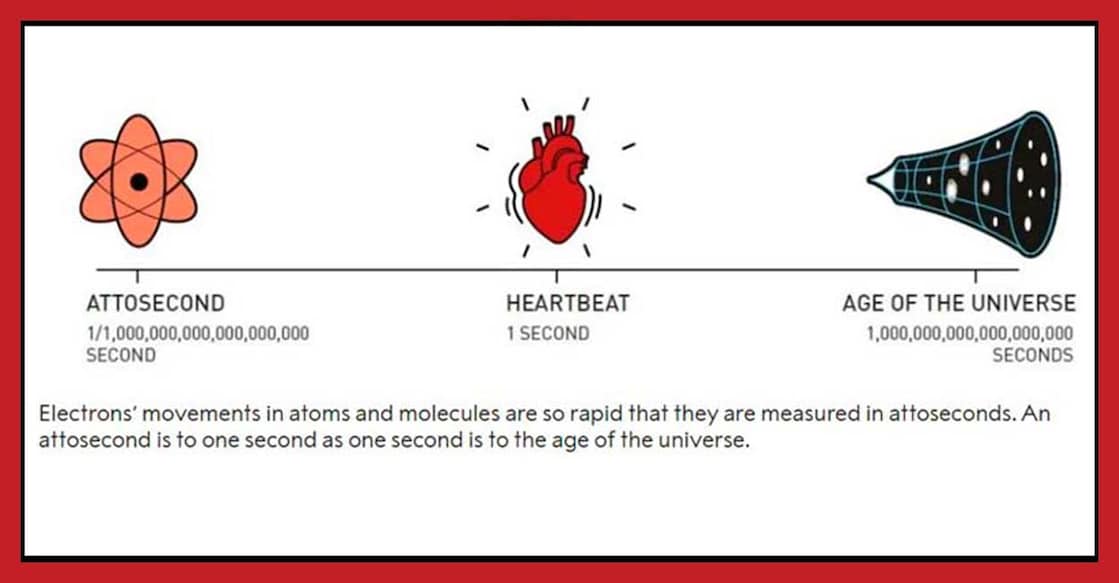Explained | What are attoseconds & femtoseconds?

Mail This Article
This year’s Nobel Prize in Physics has been awarded to three physicists — Pierre Agostini, Ferenc Krausz, and Anne L’Huillier — for their research into attosecond pulses of light.
Through their experiments, they have created flashes of light that are short enough to take snapshots of electrons’ extremely rapid movements.
Anne L’Huillier discovered a new effect from laser light’s interaction with atoms in a gas. Pierre Agostini and Ferenc Krausz demonstrated that this effect can be used to create shorter pulses of light than were previously possible.
Electrons in pulses of light
• A tiny hummingbird can beat its wings 80 times per second. We are only able to perceive this as a whirring sound and blurred movement. For the human senses, rapid movements blur together, and extremely short events are impossible to observe.
• High-speed photography and strobe lighting make it possible to capture detailed images of fleeting phenomena. A highly focused photograph of a hummingbird in flight requires an exposure time that is much shorter than a single wingbeat. The faster the event, the faster the picture needs to be taken if it is to capture the instant.
• The same principle applies to all the methods used to measure or depict rapid processes. Any measurement must be done more quickly than the time it takes for the system being studied to undergo a noticeable change, otherwise the result is vague.
• Atoms’ natural time scale is incredibly short. In a molecule, atoms can move and turn in millionths of a billionth of a second called femtoseconds (fs).
• These movements can be studied with the very shortest pulses that can be produced with a laser. But, when entire atoms move the timescale is determined by their large and heavy nuclei, which are extremely slow compared to light and nimble electrons.
• When electrons move inside atoms or molecules, they do it so quickly that changes are blurred out in a femtosecond.
• In the world of electrons, positions and energies change at speeds of between one and a few hundred attoseconds (as). An attosecond is one billionth of a billionth of a second.
• An attosecond is so short that the number of them in one second is the same as the number of seconds that have elapsed since the universe came into existence, 13.8 billion years ago.
• On a more relatable scale, we can imagine a flash of light being sent from one end of a room to the opposite wall, and this takes ten billion attoseconds.
• A femtosecond was long regarded as the limit for the flashes of light it was possible to produce. Improving existing technology was not enough to see processes occurring on the amazingly brief timescales of electrons. Something entirely new was required.
• This year’s laureates conducted experiments that opened up the new research field of attosecond physics.
• Experiments demonstrated that attosecond pulses could be observed and measured.
Electrons’ movements have become accessible
• Now that the attosecond world has become accessible, these short bursts of light can be used to study the movements of electrons. It is now possible to produce pulses down to just a few dozen attoseconds.
• Attosecond pulses make it possible to measure the time it takes for an electron to be tugged away from an atom, and to examine how the time this takes depends on how tightly the electron is bound to the atom’s nucleus.
• It is possible to reconstruct how the distribution of electrons oscillates from side to side or place to place in molecules and materials. Previously their position could only be measured as an average.
• Attosecond pulses can be used to test the internal processes of matter, and to identify different events. These pulses have been used to explore the detailed physics of atoms and molecules, and they have potential applications in areas from electronics to medicine.
• For example, attosecond pulses can be used to push molecules, which emit a measurable signal. The signal from the molecules has a special structure, a type of fingerprint that reveals what molecule it is, and the possible applications of this include medical diagnostics.



